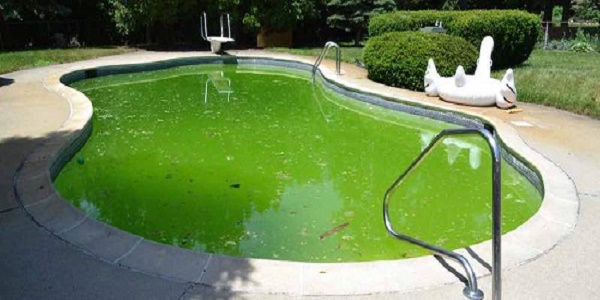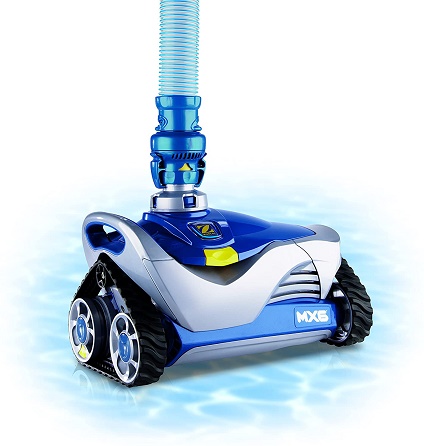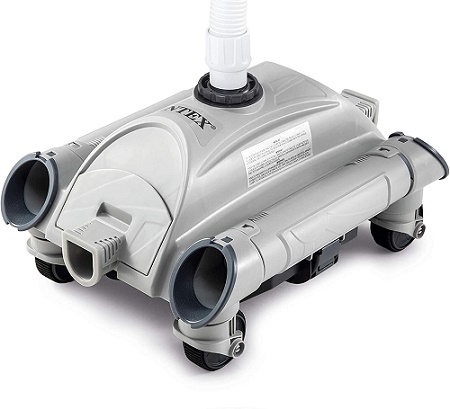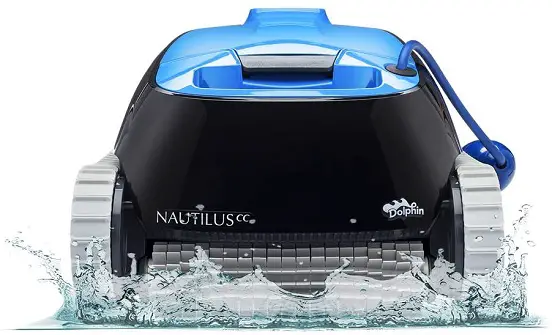Algae in the pool are mostly gotten rid of using filters, but the algae grow again in most cases. The recurrence of algae can be extremely tiring for pool owners, and a way to get rid of them ultimately is always coveted. Getting rid of algae without any chance of recurrence would involve taking some tasking steps; let us look at these steps and how you can employ them most effectively.
Algae growth in pool
What causes Algae to grow in pools
Algae are transmitted into the pool constantly either by rain, wind, pool cleaning tools, even contaminated swimwear. The primary cause of algae growth in the pool can be attributed to a lack of good sanitation, filtration, and inadequate circulation.
Why are dead algae bad for the pool?
Dead algae are very unpleasant to look at in the pool; asides from this dead algae being present in your pool means that your filter will have to keep picking it up in its effort to clean up the pool, which leads to a shorter life span for the pool filter. Dead algae can also lead to your pool becoming an unpleasant color.
How to identify dead algae in the pool
Inability to correctly identify dead algae is common, as dead algae can sometimes look like dirt particles. Most times, after dead algae have settled at the bottom of the pool, it always looks like the pool floor is coated with grey or brown dust.
The algae particles are very fine, making it easy for them to escape pool filters and find their way to the pool bottom and walls.
Can the pool turn cloudy because of the presence of dead algae?
The presence of dead algae in your pool will automatically lead to a cloudy pool, most especially when the pool has just been shocked with chlorine. This cloudiness can be dealt with by getting rid of all dead algae in the pool water, and your pool will be as clear as day again.
How to remove dead algae from pool without a vacuum?
Pool filters may serve to remove pool algae and its spores. Still, it does not provide a permanent solution as the cellular remains of the dead algae are not entirely eradicated by the filter. Instead, they remain in the filter spores.
The dead algae can be prevented from coming back into the pool by changing the filter completely or getting a new filter media to get rid of every old cellular algae skeleton the old one might still harbor.
However, backwashing the filter media will not be enough to eliminate every microscopic bacteria present in them. Other parts of the pool filter, like the cartridges and the grids, can be cleaned out using a 10 percent bleach water solution, and it should be soaked for several hours and then thoroughly hosed. The pool should also be shocked regularly with chlorine.
What are the major causes of algae in pool?
Pool algae occur due to several reasons, one major one being a dirty filter. However, algae can also arise and be hard to get rid of if there’s a steady supply of nutrients for them in your pool.
Algae mainly feed on phosphates and nitrates, and these two compounds find their way into the pool frequently, maybe by an accidental wash in of soil or fertilizer. The availability of these compounds in your pool can cause the algae to return even if they have been gotten rid of before and have a proper feast.
A frequent phosphate test check of your pool can help to keep the algae at bay.
Algae coming back repeatedly can also result from your pool water on its own, especially when the water has not been changed in a long time. As previous algae blooms would have left a high level of cellular algae skeletons, inevitably leading to another algae influx. Replacing the pool water is advised in this case to prevent algae from returning to the pool over and over again.
Is it safe to swim in a pool with dead algae?
Swimming in a pool with algae can injure the health and cause some minor complications like skin issues. This is the most common effect of pool algae, the green algae by itself cannot cause harm to the skin, but the bacterias which feed on the algae are the one that poses the major health risk. These bacterias can cause skin rashes and breaks on the skin, and these breaks can lead to more infections.
Swimming in algae-infested pools can also lead to significant physical injuries as algae make the pool floor extremely slippery, which can cause the swimmers to end up with cuts, bumps, or even broken bones if not treated efficiently.
Algae-infested pools should be avoided by swimmers, especially those who are not yet good swimmers. Bacteria infections are also very easy to get in pools ridden with algae, especially if the water is swallowed by mistake.
It could lead to diarrhea, fever, and other severe symptoms associated with stagnant water infections. Eye infections could also be gotten from swimming in a pool with a high presence of algae. Microorganisms tend to multiply very rapidly in algae-ridden pools.
How to remove dead algae from pool bottom
To completely get rid of dead algae from your pool bottom, there are a series of steps to follow, the first being brushing the pool. The walls of the entire pool have to be brushed thoroughly with the appropriate type of brush. You have to ensure to include all corners, including the stairs and all corners.
To get all the algae to float across the surface of the water. Once this has been done, you have to ensure the pool’s pump is turned on without stopping to prevent the water from declining and give the algae the chance to grow again in the pool.
The next thing should be getting rid of all the debris on the pool’s surface and in it. To do this efficiently, a proper skimmer should be purchased, or if your pool kit contains a superb big top access basket, it can be used for this purpose. This will ensure all form of the debris is collected and completely gotten rid of at once.
Finally, the pool should be shocked, and the chlorine shock treatment is a sure way to avoid dead algae reoccurring in your pool. It works to remove every form of algae, bacteria, and microorganisms from the pool.
Best pool vacuum for dead algae
2. Intex Automatic Pool Cleaner for Above Ground Pools
3. DOLPHIN Nautilus CC Automatic Robotic Pool Cleaner
Can dead algae be mistaken for mold in a pool?
How to remove mold from a pool
Mold, if not properly removed from the pool, has a high probability of reoccurring repeatedly.
To completely get rid of mold in your pool, first of all, the entire pool has to be cleaned thoroughly while paying particular attention to the affected areas. After this, elbow grease should be applied to every inch of the pool that the mold was seen in, then extra chemicals should be added to ensure the mold does not reoccur, to completely shock the pool three times the usual amount of the chemical will be used.
The pool filter should be run for not less than 24 hours after the chemical has been applied; then, the pool should be cleaned thoroughly and brushed again while checking for any remnant of the mold. These steps should be repeated if- any mold is sighed in the future.
Also read: How to clean a green pool with bleach
How to keep the pool completely free from dead algae and other microorganisms
As a pool owner, one of your major concerns is keeping your pool healthy and neat at all times, especially keeping it free from all bacterial and fungal growths. Some basic steps should be followed to ensure an algae-free pool at all times,
Ensuring a smooth, properly running circulating system: this will ensure that algae do not even have a chance to grow in the pool, and this is achieved by making sure the skimmer and pump strainer baskets of your pool filter are always kept clean.
Make sure the proper level of sanitizer is always available in the pool to get rid of any algae spore that finds its way into your pool immediately before it grows into an infestation.
Weekly shocking of your pool: this simple process will help to ensure that any bacterial spore that the sanitizer missed is gotten rid of in time.
Planning out and sticking to a regular brushing schedule.
Getting the right brush for your pool: although one of the most important things to prevent an algae infestation is brushing your pool walls, using the wrong brush for this task can damage your pool surface. If your pool surface is vinyl-lined or fiberglass, a soft brush is most advisable.
Make use of algaecides regularly for your pool.
Conclusion
As a pool owner, one of your primary concerns will be keeping your pool clean at all times to make sure dead algae stay out of your pool without any chance of a recurrence. Ensure to change and Clean out your filter parts frequently and shock your pool regularly to eliminate any lingering algae spores. Algae-infested pools are known to pose harmful risks to swimmer’s health, so pools must be ridden with any dead algae spores.





